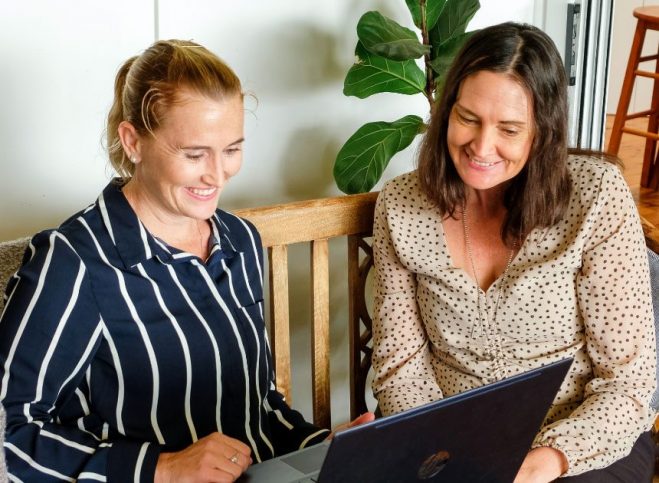
Download our comprehensive EOFY Checklist below.
Before The End Of The Year
Review your business progress
Now is a good time to understand how well your business has performed for this past financial year. The ways you can do this are by:
- Reviewing your Profit and Loss statement – A Profit and Loss sheet can help you understand how much profit your business is making and how much you are spending. It also helps you to understand where you can tighten your belt a little in order to improve your financial standing. Not sure how to read a Profit and Loss statement? You can find out here. Alternatively, having a chat with your Diverse advisor can give you a clear idea of where you may be sitting for the year.
- Review Superannuation paid for Directors – the maximum before-tax contribution is currently $27,500 per year. If you’re unsure, have a chat with your accountant. Or, you can find out more about Superannuation requirements here.
- Review the list of Assets & remove obsolete or defunct items – By collecting all records of your asset expenditures, you can get a head start on calculating your depreciation expense claims, as well as the information required for any capital gains tax needs.
- Review cash flow for additional tax-deductible pre-30 June purchases – Doing your homework and understanding what tax deductions you can claim can benefit you at this time of the year. By knowing what your cash flow looks like and how your expenditures can impact your finances, you can make sure you are prepared for the year ahead, as well as any payments are made before June 30 that are deductible. You may be able to claim deductions if your business has motor vehicle expenses, has set up a website, operates at your home, uses diesel fuel and much more. For simplicity, you can also utilise the myDeductions app available on the App Store and Google Play store. This app can help you to keep track of your expenses throughout the year.
- Review your Integrated Balance Account (monies owed to the ATO) – Do you owe any money to the ATO? Now is a good time to check on these payments and see if you have any funds still owed to them. If you do, it is ideal to pay it before June 30, if possible.
- Review changes to be made to your business process/procedures – In order to get a good start on the next financial year, it’s important to assess your current business processes and see what needs to be changed or updated. You can then utilise this time before June 30 to create timelines for these changes to take effect in and establish a timeframe for work to be completed. Some of these updates and changes include new software (such as accounting software like Xero), changes to your business structure (such as changing from a sole trader to a company) or ensuring you have the right insurance in place for your business. You can see more about the types of insurances your business may require here.
- Backup and secure your information – Making sure your business is safe from fraud and privacy breaches are important, no matter what type of business you are running. Backing up and registering your data in an off-site location that is secure is an ideal solution for many business owners. Using cloud-based software such as Xero can help protect your business from fraud, so now is a good time to consider the switch.

Before The End Of The Year General Tax Checks
Maximise your deductions
As stated above, before June 30 is a good time to spend on any necessary expenses to maximise your deductions. Of course, you should still ensure your cash flow is in good order before making purchases.
- Service vehicles – If you have business vehicles that you or your staff are using, now is a good time to get the vehicles serviced and replace any tyres that may need attention.
- Service equipment – For any equipment that you use for your business, servicing them now is ideal. Not only can you maximise your deductions, but you’ll also be ensuring your equipment is able to last longer.
- Pay for any fees, memberships or subscriptions – Take a look at any subscriptions or memberships that you’re a part of and get your fees paid before June 30. It could be a Chamber of Commerce membership, a local business group or even a magazine subscription related to your field of work.
- Pay your bills – Any bills that can be paid for in advance or before June 30 should be completed if possible. Items such as insurance bills, electricity or phone accounts can all be paid before the end of the month for maximum effect. You may also be able to get a discount on your rent if you prepay for a period, so it’s best to have a chat with your real-estate agent to see if this is possible.
Make sure last year is finalised
Before another financial year is over, have you finalised everything for last year? Are all adjustments from last year finalised? Have you lodged your tax return and have a copy? Making sure everything is finalised can help ensure you can adjust any data files for any adjustments by your accountant and any impact of the end of the FBT year.
Private usage adjustments
Yes, you can complete a once-a-year adjustment for private expenses. Your tax agent may have included an adjustment in last year’s final tax returns for disallowing private expenses – has the GST adjustment been made? It is absolutely acceptable to claim all GST on all taxable purchases for a business or enterprise during the year, if turnover is less than $2m, even if a portion of the expenses are for private use.
The ATO allows a once a year adjustment to reduce the amount of GST claimed. When the Tax Agent has completed the end of year tax returns and informed the number of private expenses, then make a GST claim reduction in the next BAS. Therefore you will have only claimed back the GST on the business portion. So if you are advised there was $1100 of private expenses, then reduce your next GST claim by $1100/11 = $100. You do not have to inform the ATO, just keep the records.
If you post the total of private expenses to the loan account and don’t claim any GST back at the time of purchase that is okay as well.
Stock and inventory
Are you overflowing with stock? Need to know how much stock you really have? Reviewing your stock list in detail can include when your items last sold and at what price. If you have too much stock, consider having a sale and discount your items that are slow to move from your store. This will help improve cash flow in the short term.
Consider writing off the value of the stock that won’t sell and take a full stock count on 30 June. Enter these figures through Stock Count and Inventory and adjust as required.
Plant and equipment
For any existing plant and equipment, obtain a list of your assets the accountant uses to calculate depreciation. Take the time to review this list and remove any items that no longer exist or are obsolete. Be sure to highlight these items to your accountant, as well as inform them of any items that have since been sold.
Before The End Of The Year Payroll Checks
Ensure you check the maximum amounts of superannuation
If you are processing the payroll, it is wise to check that no employee receives more than the maximum superannuation contribution unless instructed by the employee’s financial planner or accountant to do so.
The maximum contribution is $25,000 for 2021/22. If employees or owners appear to be near or over the maximum, the bookkeeper should notify the person in question.
Maximise those tax deductions – Superannuation
While Superannuation Guarantee is not due till the 28th of July, in order to get the income tax deduction in this financial year, the superannuation must have been paid through your bank account before 30 June.
Complete the STP final pay event for your employees
Assuming you have already opted into Single Touch Payroll (STP) this year, you no longer have to produce individual payment summaries to your employees. Instead, all payment information is sent directly to the employee via their MyGov login when lodging their tax return.
Xero has created a useful EOFY Payroll checklist to help you with all of your payroll obligations, which you can find here.
You do need to complete an STP final pay event by the 14th of July to finalise the STP for the financial year.




